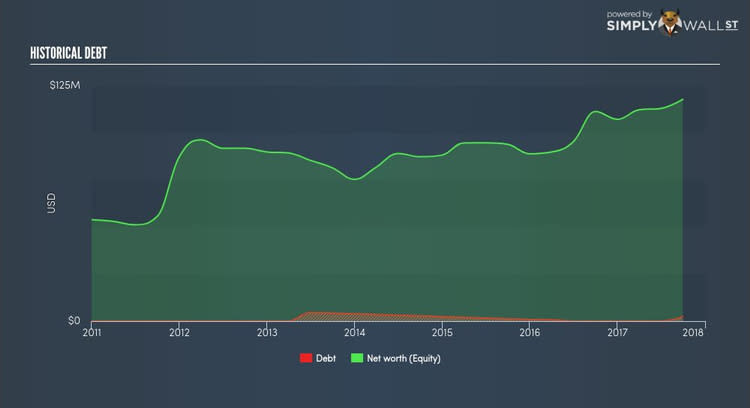Is Gold Resource Corp’s (GORO) Balance Sheet A Threat To Its Future?

Investors are always looking for growth in small-cap stocks like Gold Resource Corp (AMEX:GORO), with a market cap of USD $215.62M. However, an important fact which most ignore is: how financially healthy is the company? The significance of doing due diligence on a company’s financial strength stems from the fact that over 20,000 companies go bankrupt in every quarter in the US alone. Here are few basic financial health checks to judge whether a company fits the bill or there is an additional risk which you should consider before taking the plunge. Check out our latest analysis for Gold Resource
Does GORO generate an acceptable amount of cash through operations?
While failure to manage cash has been one of the major reasons behind the demise of a lot of small businesses, mismanagement comes into the light during tough situations such as an economic recession. These catastrophes does not mean the company can stop servicing its debt obligations. We can test the impact of these adverse events by looking at whether cash from its current operations can pay back its current debt obligations. GORO’s recent operating cash flow exceeded its debt obligations within the past year, which means GORO generates enough money in a year through its operations to pay off its near-term debt. Hence, debt poses a virtually insignificant risk for the company. This is great news for both debtholders and shareholders, as the company exhibits cautious cash and debt management.
Does GORO’s liquid assets cover its short-term commitments?
In addition to debtholders, a company must be able to pay its bills and salaries to keep the business running. As cash flow from operation is hindered by adverse events, GORO may need to liquidate its short-term assets to meet these upcoming payments. We test for GORO’s ability to meet these needs by comparing its cash and short-term investments with current liabilities. Our analysis shows that GORO is able to meet its upcoming commitments with its cash and other short-term assets, which lessens our concerns for the company’s business operations should any unfavourable circumstances arise.
Does GORO face the risk of succumbing to its debt-load?
A substantially higher debt poses a significant threat to a company’s profitability during a downturn. For GORO, the debt-to-equity ratio is 2.00%, which indicates that the company faces low risk associated with debt. No matter how high the company’s debt, if it can easily cover the interest payments, it’s considered to be efficient with its use of excess leverage. A company generating earnings at least three times its interest payments is considered financially sound. GORO’s interest on debt is sufficiently covered by earnings as it sits at around 133.6x. This means lenders may be inclined to lend more money to the company, as it is seen as safe in terms of payback.
Next Steps:
Are you a shareholder? GORO has demonstrated its ability to generate sufficient levels of cash flow, while its debt hovers at a safe level. In addition to this, the company will be able to pay all of its upcoming liabilities from its current short-term assets. Going forward, its financial position may be different. You should always be keeping on top of market expectations for GORO’s future growth on our free analysis platform.
Are you a potential investor? GORO’s high cash coverage and low levels of debt indicate its ability to use its borrowings efficiently in order to produce a healthy cash flow. Moreover, its high liquidity ensures the company will continue to operate smoothly should unfavourable circumstances arise. In order to build your confidence in the stock, you need to also analyse GORO’s track record. As a following step, you should take a look at GORO’s past performance analysis on our free platform in order to determine for yourself whether its debt position is justified.
To help readers see pass the short term volatility of the financial market, we aim to bring you a long-term focused research analysis purely driven by fundamental data. Note that our analysis does not factor in the latest price sensitive company announcements.
The author is an independent contributor and at the time of publication had no position in the stocks mentioned.

